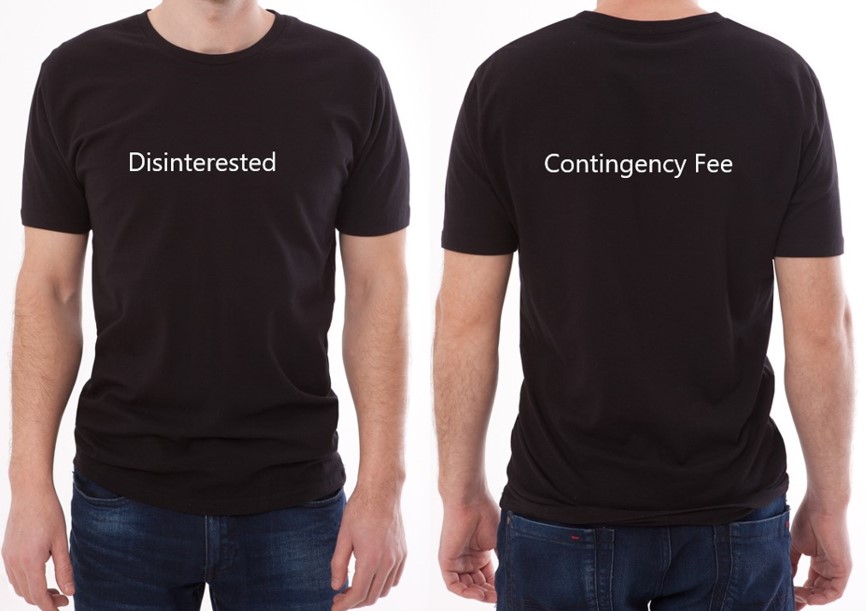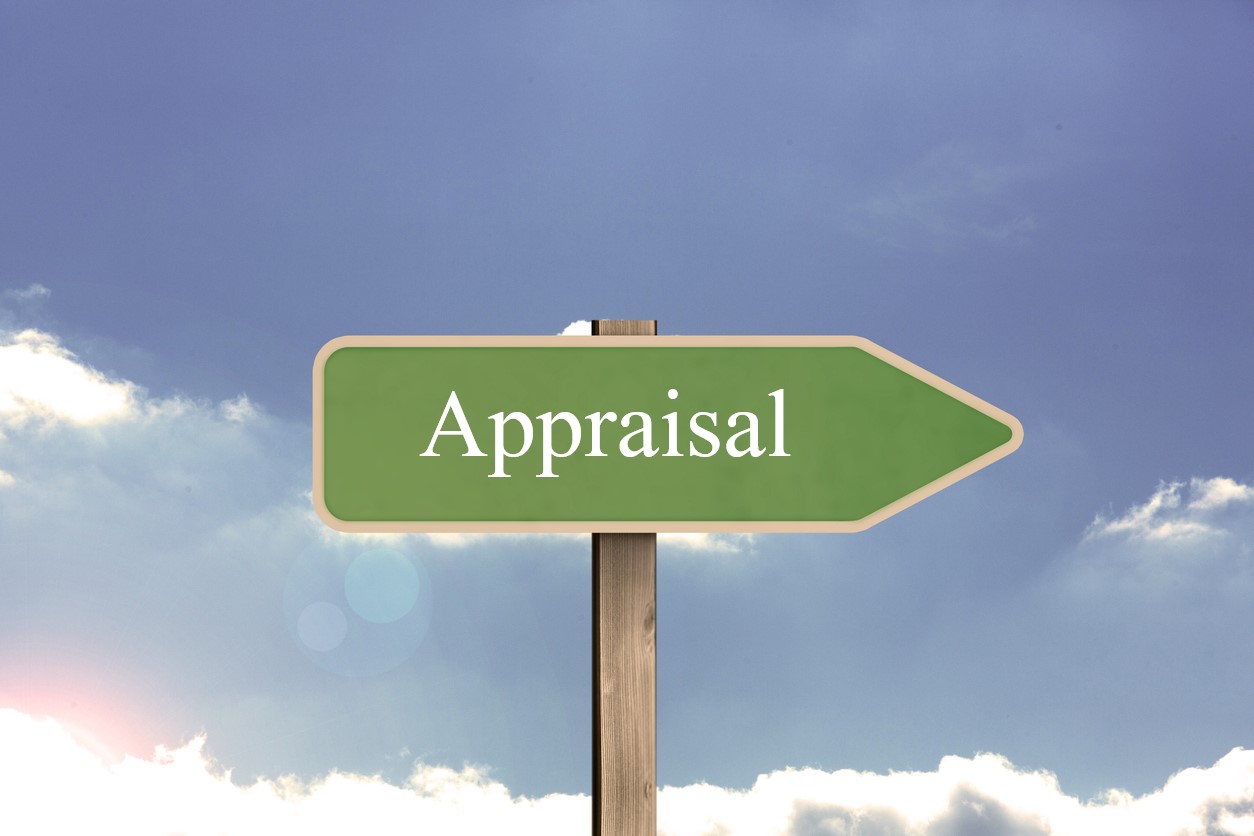The worst feeling is waiting for the end of your insurance claim…and then it is not the end. I think I would sometimes want a bullet to the head rather than to go back and back and back again. But karma will come around for those insurance defense attorneys charging by the hour and delaying claims payments. When appraisal panels make ambiguous findings, the insurance defense attorneys should send the appraisal panel a case of Cristal as a gift. When ambiguous awards are made, the only certain loser is the policyholder who signed up for the promise of good faith treatment, not for the delay. Those charging-by-the-hour insurance company attorneys are not giving the customer any good faith benefit of the doubt about the ambiguous award. It is all about getting the best deal they can for their client. And to be fair and balanced, that is their ethical obligation as attorneys, even if they personally feel otherwise.
So, what happens when the appraisal award is ambiguous? A federal case decided last month in Minnesota provides an example.1 The relevant facts leading to the ambiguity are:
On August 18, 2021, the parties participated in an appraisal pursuant to the insurance policy’s appraisal provision. The Appraisal Panel wrote an award document (‘Appraisal Award’) that states the cost of repairing the garage roof….The Appraisal Award indicates that 7.5% of the roof tiles were damaged.
The Lost Replacement Cost (LRC) to repair the damaged 7.5% of the roof is $20,600.00, and the Lost Actual Cash Value (LACV) is also $20,600.00.
The parties disagree, however, on whether the Appraisal Award indicates that the entire roof must be replaced and whether the panel considered the existence or availability of matching tiles. At the bottom of the Appraisal Award, the Panel handwrote, ‘If matching is considered the cost of the entire roof is’ $155,000.00 LRC and $31,000.00 LACV. While the Fenskes interpret this statement to mean that the Appraisal Panel determined there were no equivalent roof tiles to replace the damaged ones, Integrity interprets the statement to mean that if the new tiles’ color cannot match the existing tiles, then the Fenskes will be entitled to the greater award.
Based upon its interpretation of the Appraisal Award, Integrity paid the Fenskes $20,600.00 to repair the 7.5% of the garage roof that was damaged during the storm. ….Several months later, the Fenskes responded to Integrity and claimed they were entitled to the greater award…For the first time, the Fenskes stated they needed to replace the entire roof because matching tiles do not exist. Integrity refused.
It appears to me that the panel made an award that is contingent on whether the matching will work. In my opinion, contingent awards about subjective future results never work. This is why policyholders should hire great attorneys who treat appraisal as final and help provide the appraisers with proof that matching will or will not work.
The court took a very academic analysis of the situation, first defining the concept of “color matching”:
’Color matching’ describes the process of replacing both damaged and undamaged property in order to provide a comparable color match. See Cedar Bluff Townhome Condominium Ass’n, Inc. v. American Family Mut. Ins. Co., 857 N.W.2d 290, 291 (Minn. 2014). Color matching often occurs when the undamaged property’s color is no longer available for purchase.
This blog previously analyzed this Minnesota matching rule in Recent Decision as to Meaning of “Comparable Material and Quality”.
The judge noted that the general rule is that an ambiguous appraisal award should be returned to the panel for clarification:
Minnesota Supreme Court, Eighth Circuit, and U.S. Supreme Court precedent tend to show that ambiguous appraisal awards should be returned to the appraisal panel for clarification. See United Steelworkers of America v. Enterprise Wheel & Car Corp., 363 U.S. 593, 599, 80 S. Ct. 1358, 4 L. Ed. 2d 1424 (1960) (returning an arbitration award to an arbitrator for clarification); Herll v. Auto-Owners Ins. Co., 879 F.3d 293, 296 (8th Cir. 2018) (‘A reviewing court is prohibited from ignoring the ambiguity and summarily affirming the [appraisal] award’) (citing Menahga Educ. Ass’n v. Menahga Independent School Dist., No. 821, 568 N.W.2d 863, 869 (Minn. Ct. App. 1997)) (internal quotation marks omitted). See also Minn. Stat. § 572B.20(d)(3) (indicating that ambiguous awards may be submitted to an arbitrator to consider whether to modify, correct, or clarify the award); Hilltop Constr., Inc. v. Lou Park Apartments, 324 N.W.2d 236, 240 (Minn. 1982) (applying the same Minnesota Statute to insurance awards and noting that ‘the trial court does have the authority to compel arbitrators to clarify their awards’)….
The Eighth Circuit addressed this issue at length in Herll. There, a home was damaged in a storm, and the homeowners submitted an insurance claim to their insurer… The parties conducted an appraisal and the resulting appraisal award directed to ‘see above’ for the award amount but did not clarify which of the multiple preceding dollar values it was referencing. The District of Minnesota summarily awarded the homeowners the greater of the preceding dollar amounts. The Eighth Circuit later vacated the summary judgment and remanded the case with directions to resubmit the award to the appraisal panel because the appraisal award was ambiguous. The Eighth Circuit explained that the award was ‘reasonably susceptible of more than one interpretation, and [was] therefore ambiguous.’ (citing Art Goebel, Inc. v. N. Suburban Agencies, Inc., 567 N.W.2d 511, 515 (Minn. 1997)). Herll indicates that if an appraisal award is ambiguous, then summary judgment is inappropriate, and the appraisal award should be returned to the appraisal panel for clarification.
With this, the court noted the rule of law to be followed when there is an ambiguous appraisal award in Minnesota:
Under these circumstances, the correct action is not for the court to weigh the merits under the law but instead to resubmit the award to the arbitrator’s bargained-for-construction of facts and decision under the contract….
The only remaining question was whether the appraisal award was ambiguous. The court noted the facts and controversy to make this determination:
[T]he heart of this action is what the Appraisal Panel meant by the phrase, ‘if matching is considered.’ The Fenskes insist that the phrase unambiguously shows the panel considered color matching and made a finding of fact that no suitable match was available. Were that the case, the parties agree the Fenskes would be entitled to the $155,000.00 award because color mismatch is a type of physical loss covered by their insurance policy… On the other hand, Integrity insists that ‘if matching is considered’ unambiguously conveys that the panel did not make a finding of fact on color matching. If that were the case, the Fenskes are not entitled to the full $155,000.00 award unless they first show that no reasonable color match is available. Ultimately, the Fenske’s Appraisal Award is unclear regarding if the Appraisal Panel even considered if matching roof tiles are available.Both parties’ interpretations of the statement ‘if matching is considered’ are reasonable. On the Fenske’s interpretation, it is a reasonable that it means the panel investigated color matching and determined that no suitable color match is available. Alternatively, Integrity’s interpretation that it means the panel had not yet made any findings of fact as to the availability of color matching and simply punted that investigation to the two parties to determine on their own is also reasonable. Because the parties’ differing interpretations are both reasonable, the Court finds that the statement if matching is considered’ is ambiguous.
Who has the burden to prove if the tiles can match, and what evidence should be considered? The court provided some advice for all involved in these situations:
Here, the Fenskes have failed to satisfy their burden of showing that no color-matching tiles exist. The existence of matching roof tiles is a material fact because if matching tiles exist, then the Fenskes are only entitled to $20,600.00 to replace the damaged 7.5% of their roof. If matching tiles do not exist, then they are entitled to the full $155,000.00 for matching purposes. But the Fenskes have not provided any evidence that matching tiles are unavailable. They have not submitted any affidavits, brochures, or other documents that demonstrate they would be unable to purchase a comparable roof tile color. In fact, Integrity has presented evidence to the contrary: The Fenskes already had mismatched tiles, so replacing the damaged ones with similarly mismatched tiles could, in fact, be comparable.
The conclusion of the court was the following:
Because the Fenskes’ Arbitration Award is ambiguous regarding if the Appraisal Panel determined the availability and existence of matching tiles, the Court will return the Award to the Panel for clarification. If the Panel did not determine the existence of matching tiles, the Court requests that the Appraisal Panel make such a determination. Moreover, because the Panel did not settle the issue of material fact about the availability of color-matching tiles, and the Fenskes’ have not provided any other evidence regarding availability, the Court will deny the Fenskes’ Motion for Summary Judgment and stay any interest award until the principal amount owed is settled.
I preach to our Merlin Law Group attorneys that insurance company claims decision makers want to be shown rather than told why they should pay more money. Evidence showing and explaining damage is crucial to successful policyholder outcomes. This is true during adjustment, at settlement conferences, at trial, and at appraisal proceedings.
Thought For The Day
A gentleman would be ashamed should his deeds not match his words.
—Confucius





